Rock Xtreme 780 17in Gaming Notebook Review
Rock Xtreme 780 17in Gaming Notebook
Ardjuna takes a look Rock's newly refreshed gaming notebook.
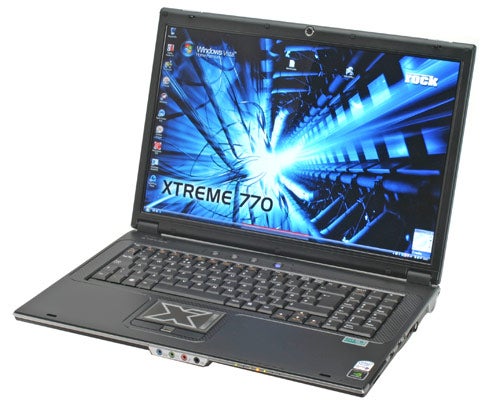
Verdict
PC gamers have a tough time of it. Not only do you have to know quite a bit to get everything working properly, but you also have to regularly invest in upgrades or even entirely new systems. And if you go the affordable desktop route, you end up with a system that’s the opposite of portable. An alternative, of course, is a gaming notebook like the Rock Xtreme 780 we’re looking at today.
Rock is no stranger to making some blazingly fast “mobile” systems, as evidenced by the award winning Xtreme 770 T7800-8800 we reviewed last year. It has since been refreshed to use Intel’s latest mobile platform, so can its successor work the same magic? 
Based on Clevo’s M571TU chassis and with only one outward change from the 770 (replacing an S-Video connection with HDMI), the Xtreme 780 manages to look the part, giving quite a slim impression considering its powerful internals and weight of just over 4kg. It’s decked out in an inoffensive combination of silver and black, with the lid dominated by a brushed metal section sporting a large ‘X’ and the Rock logo. At the front and back of the lid are strips of glossy black plastic, while the sides are matte black to match the inner bezel. 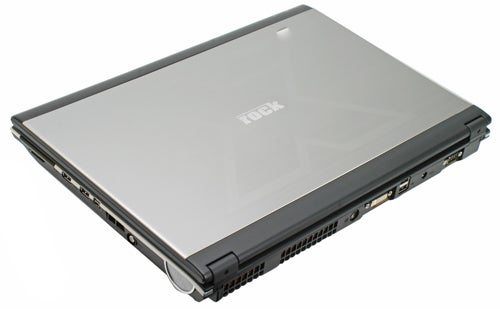
Likewise, the base of the chassis is matte black, with thin silver accenting that runs all around the front and sides incorporating the ports and side-mounted speakers. There are two silver latches holding down the lid, so you have to use two hands to open it up. This is less convenient than single-latch systems, but they’re quite sturdy and hold the lid closed securely. In fact, build quality throughout is mostly good. A notebook carrier bag is also included as standard, which is a great value-add for those who don’t already own one, but an unnecessary cost for those who do.
Opening the Rock up, we’re greeted by a fairly attractive interior, spoiled only by the cheap white ‘X’ across the dark-brown touchpad. Aside from this most of the surface is smooth matte black plastic. Around the keyboard is a faux carbon-fibre effect strip with a black-on-black checkerboard pattern. It really doesn’t add anything and the laptop would probably have been more attractive without it, but it’s innocuous enough not to distract.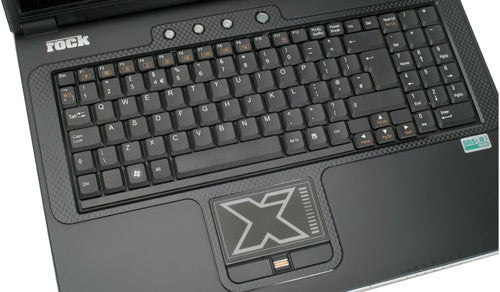
Above the keyboard are three shortcut buttons and the power button, which is backlit in blue. The keyboard, meanwhile, is really decent. Layout is good, with a proper large Enter key and Ctrl on the outside of the Fn key. Key feedback is mostly pleasant and the only real niggle is that getting closer to the number pad, keys start to rattle.
As already mentioned, the touchpad doesn’t fit in well with the rest of the Xtreme 780’s look, thanks to a muddy brown surface and the cheap white X. But in terms of use there’s little room for complaint. It’s well-proportioned and the slightly textured surface is a pleasure to use. Likewise the black touchpad buttons, between which nestles a fingerprint scanner, are a good size and offer excellent feedback.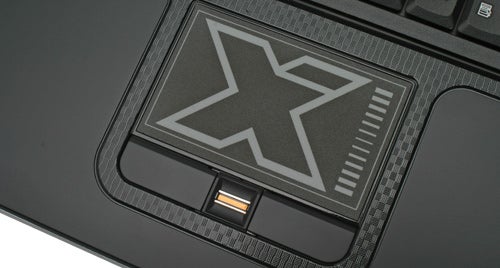
Moving on, the machine’s left side houses a lock-slot and Blu-ray drive, which goes rather well with the Full HD (1,920 x 1,200) 17in screen. If you want to view your high definition discs on something a little bigger, the Xtreme accommodates brilliantly with both DVI and HDMI outputs — there’s even a DVI-VGA adapter thrown in for good measure. Unfortunately, though, the DVI output doesn’t seem to be dual-link, meaning owners of 30in monitors may wish to look elsewhere.
The majority of the cooling is also at the notebook’s back, together with the power socket and two USB ports, one of which doubles as eSATA. At the front there is an IR sensor — though Rock’s optional remote uses Bluetooth, this does mean any Windows Media remote ought to work — and audio is very well catered for with four 3.5mm jacks comprising headphone, microphone, line-in and S/PDIF (digital) out from the Realtek HD audio chip. 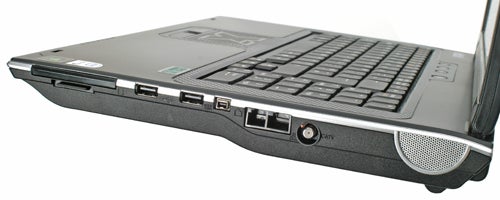
To the right are a further two USB ports, mini-FireWire and an antenna input for the optional TV tuner card. Beside these reside a 54mm ExpressCard slot and a memory card reader. Modem and Gigabit Ethernet ports can also be found here and the Rock has Draft-N for speedy wireless networking.
Starting the machine up, the first thing that becomes immediately obvious is that it can become very loud — so much so that someone in the office came over to ask what was wrong with it. After the twin small fans at the bottom spin down, normal use (including watching films) is relatively quiet, though a slight whine remains audible. But during gaming, the Xtreme 780 gets going again, becoming the noisiest notebook we’ve had through the labs in a while. This unfortunate property means noise-isolating/cancelling headphones are pretty much a must when gaming.
This is not to say the Xtreme 780’s onboard speakers are bad. They reach high volumes without distortion, produce clear high notes and create a good sense of depth. However, regardless of the above noise issue, headphones or external speakers are still preferable due to a lack of bass making everything come out somewhat tinny.
Getting onto the 17in 1,920 x 1,200 screen, things remain a mixed bag. There is one immediately obvious concern: when viewing dark shades or a black screen from any angle even the slightest bit left of centre, a white-grey mist-like discolouration occurs, covering the left half of the screen to an extent dependant on that angle. This is probably a defect specific to our sample though, so hopefully you shouldn’t have the same problem. 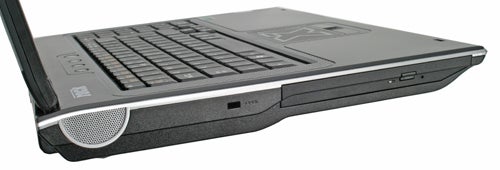
Other than this, if you can see past the reflections in the high-gloss screen, it performs moderately. Even aside from the ‘mist’ issue, viewing angles are more restricted than most, with conspicuous contrast and colour shift. There is also some minimal backlight bleed along the screen’s bottom edge, but it’s nothing you would notice too much while gaming or watching a film. Packing a more-than Full HD resolution into such a small area means everything is pin-sharp and after dimming the brightness a bit colours are realistic, rather than oversaturated, with minimal banding evident.
Of course, this being a Rock, you get a lot of power under the hood. In our sample, things are headed by one of the fastest ‘standard’ Core 2 Duo mobile chips, a T9600 with 6MB cache running at 2.80GHz, though this option has since become unavailable — see addendum at the end of the review. This was backed by a full 4GB of DDR3 RAM, though the configuration Rock sent us had a 32-bit version of Windows Vista Premium installed meaning the system could only effectively use 3GBs. A 64-bit upgrade is available for only £10 extra, though. 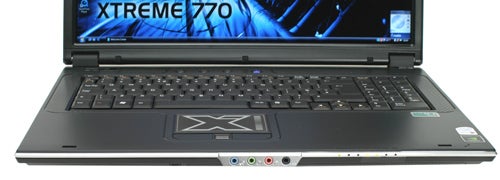
There is also a 320GB hard drive spinning at a speedy 7,200rpm to keep game loading times to a minimum. Most importantly for gamers is the video card, as once you have 4GB of RAM, even a slower processor combined with a good graphics card will usually still let you play the latest games with eye-candy turned up, whereas the inverse is not true.
In this case you get a very capable card indeed in the guise of an nVidia GeForce 9800M GTS with 512MB of DDR3. While this card is nowhere near as powerful as its desktop numerical counterpart, as far as portable computing goes it hits the sweet spot between performance and price, for while the 9800M GTX performs better and comes with double the memory, it also adds a not inconsiderable £275 to the Rock Xtreme 780’s already hefty base price. 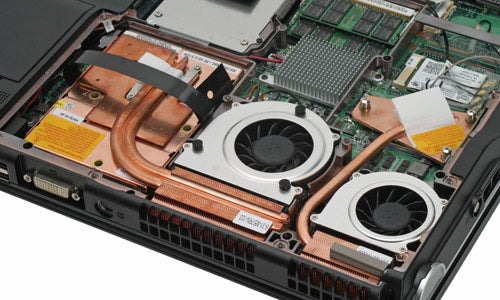
And the GTS is certainly no slouch, giving a playable 28 frames per second (FPS) average in Call of Duty 4 at 1,920 x 1,200 with details maxed out. As usual Crysis in DX10 is a bit tougher and is unplayable at the screen’s native resolution unless reverting to Medium Detail. But, thanks to the panel’s decent upscaling, I found the ideal setting was 1,280 x 800 at High Detail, which gave an eminently playable 38.4FPS average.
Overall then, we have a notebook that will handle any application or task you care to throw at it with consummate ease and play most games with plenty of visual detail. You can’t expect much mobility from a desktop replacement or gaming notebook, but the Rock nonetheless manages a respectable two hours in the Reader test, with wireless turned off and screen brightness set to 40 per cent — beating Alienware’s M17 by a full 30 minutes.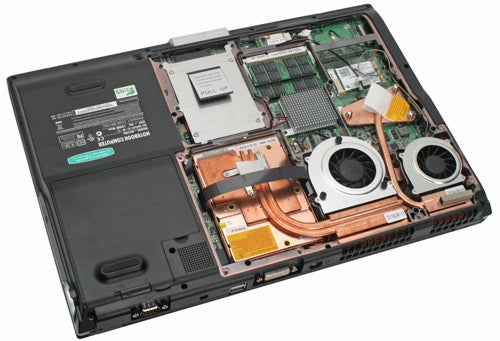
In terms of value for money, it’s a tough call. Rock is generally not too far off the mark, with prices similar to the likes of Novatech’s gaming laptops for comparable configurations and a three year European collect and return warranty.
However, Dell’s ever-fickle pricing makes an XPS gaming laptop a far better bargain right now. For only £50 more than the above X780 configuration, the XPS M1730 provides you with a similarly Full HD 17in display, 4GB memory capacity (albeit DDR2 instead of DDR3 RAM) and Blu-ray drive, but also includes a remote, twin 200GB 7,200rpm drives in RAID 0 and most importantly, twin GeForce 8800GTXs in SLI. When you consider that the 9800 series is only an incremental update to the 8800 line and an 8800GTX is already faster than a 9800GTS in most titles, you can imagine what a difference two of them will make. As I’ve said many times, when it comes to gaming the GPU is ”much” more important than the CPU.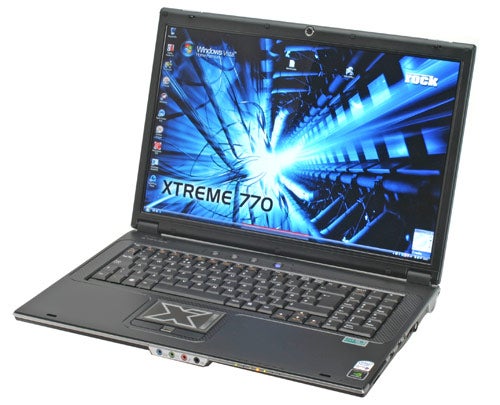
Verdict
Aside from the very odd (and hopefully one-off) screen issue, the only major complaint with the Xtreme 780 is that it is a very noisy beast. It generally offers good build quality and lots of features, moderately attractive if unremarkable looks, and a decent amount of customisation. But, quite apart from the annoying acoustic issue, in terms of value for money there are better alternatives out there right now.
Addendum: Since Rock sent us the sample reviewed here, it has changed its available configurations. Unfortunately the fastest Core 2 Duo which is now available in an Xtreme 780 with 9800GTS video card is a 2.2GHz T5900 with 2MB cache, rather than the 2.80GHz T9600 with 6MB cache in our sample machine. Obviously this would have a significant impact on the benchmark results, though our assessment has been altered to take this into account. New options include a 2.0GHz Q9000 quad-core processor and, at the top of the range, a 2.53GHz QX9300 quad-core.
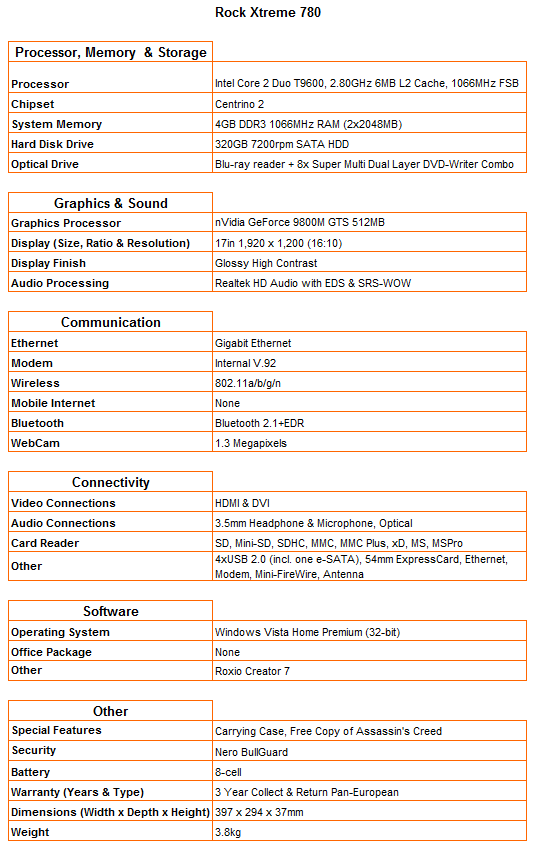
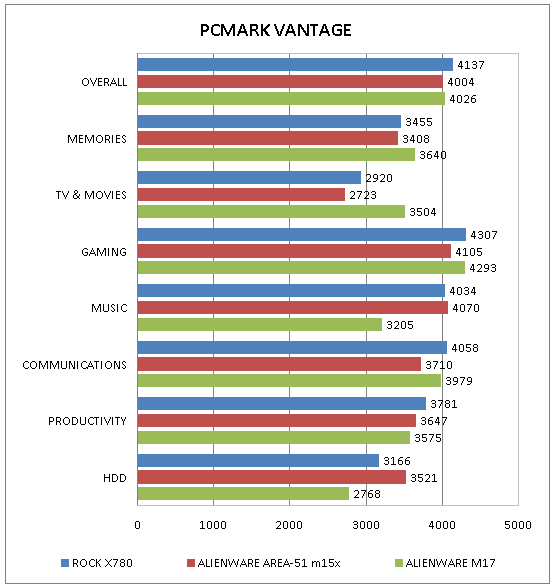
How we test laptops
Unlike other sites, we test every laptop we review thoroughly over an extended period of time. We use industry standard tests to compare features properly. We’ll always tell you what we find. We never, ever, accept money to review a product.
Trusted Score
Score in detail
-
Performance 8
-
Design 7
-
Value 7
-
Features 9

